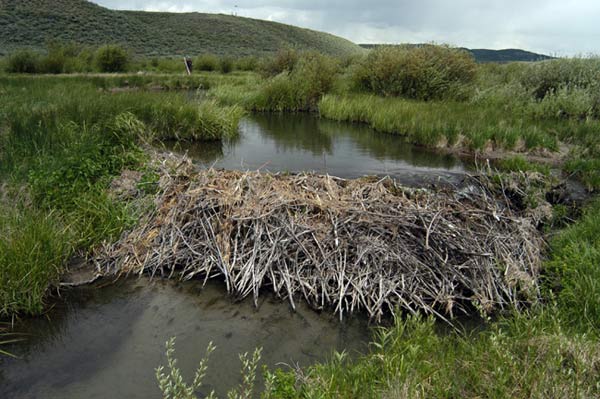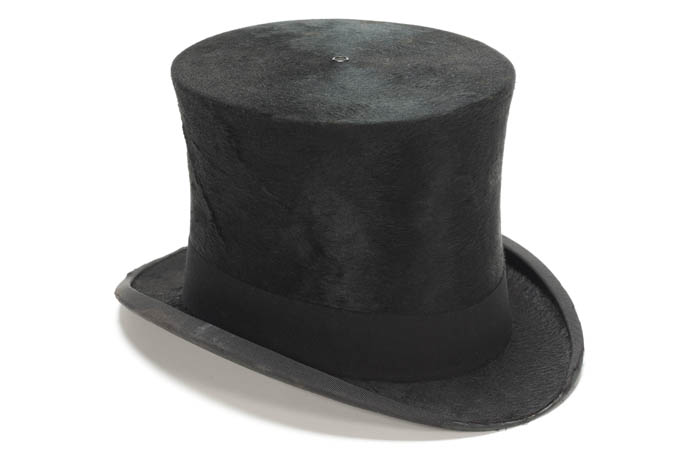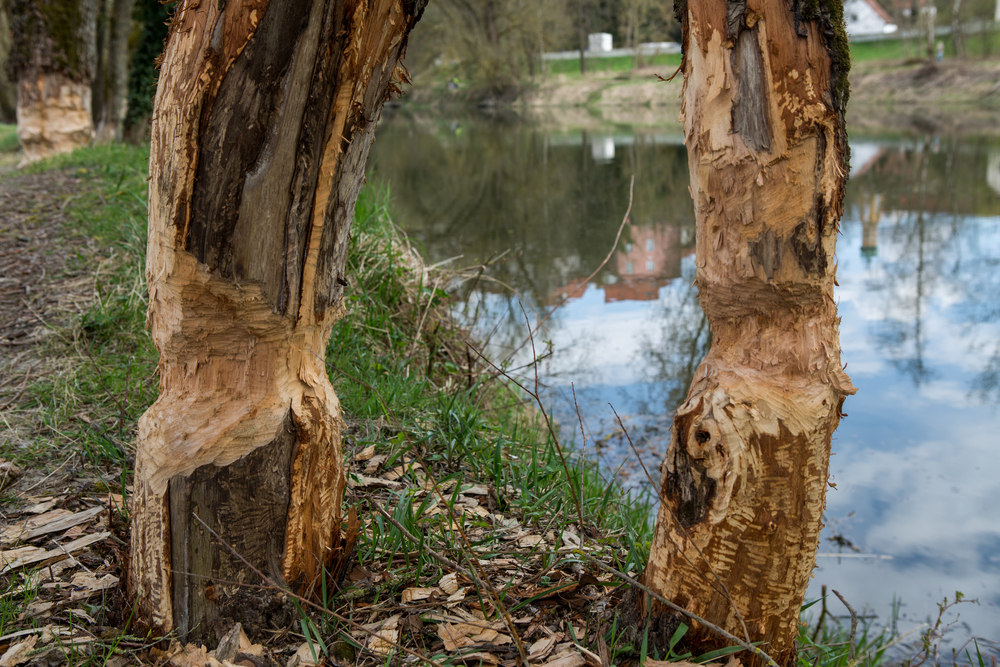Facts About Beavers

Beavers are among the largest living rodents in the world. They have thick fur, webbed feet and flattened, scale-covered tails. With powerful jaws and strong teeth, they fell trees in order to build homes and dams, often changing their environment in ways few other animals can. In fact, the idioms "busy as a beaver" and "eager beaver" are synonymous with being industrious and hardworking.
Size
There are only two species of beaver. The American beaver (Castor canadensis) typically weighs 60 lbs. (27 kilograms) and are 23 to 39 inches (60 to 100 centimeters) long. The tail adds another 7.75 to 12 inches (20 to 30.5 cm) to its length, according to National Geographic.
Eurasian beavers (Castor fiber) are around the same size. They usually weigh from 29 to 77 lbs. (13 to 35 kg) and are 29 to 53 in (73 to 135 cm) in length, according to the Animal Diversity Web (ADW) at the University of Michigan. Their tails are narrower and skulls are smaller than those of the American beaver.
Beavers have large teeth. Their upper incisors are from 20 to 25 mm long, according to ADW. They continue to grow throughout a beaver's lifetime. Beavers have adapted to a semi-aquatic existence with closable nostrils and ears, and transparent eye membranes.
Both male and female beavers have a pair of scent glands, called castors, at the base of their tails. They use the secretions from these glands, a musk-like substance called castoreum, to mark territory.

Habitat
All beavers need water to survive. They live in or around freshwater ponds, lakes, rivers, marshes and swamps. American beavers live throughout North America, but stay clear of deserts and the far northern areas of Canada. Eurasian beavers once lived all over Europe and Asia. Now, they only live in small numbers throughout southern Scandinavia, Germany, France, Poland, and central Russia due to overhunting.
A beaver’s home is called a lodge. Lodges are little dome-shaped houses made from woven sticks, grasses and moss plastered with mud. They that can be up to 8 feet (2.4 m) wide and up to 3 feet (1 m) high inside, according to ADW. Lodges are built on the banks of ponds, on islands or on lake shores, just barely above water level. Many lodges have an underwater backdoor for instant swimming access.
Habits
Beavers are primarily nocturnal. They spend most of their time eating and building. Beaver create dams to make ponds, their favorite place to live. Dams are created by weaving branches together, felling trees by cutting them down with their teeth, and waterproofing the construction with mud. Dams can be several meters in length and up to 6.5 feet (2 m) high, according to ADW. Beavers also dig canals to bring water from large bodies of water to their feeding area.
Beavers have a tremendous impact on ecosystems. Dams alter the flow of rivers and can flood hundreds of acres. Dams prevent erosion and raise the water table, which helps purify the water as silt builds up and breaks down toxins, according to ADW. As sediment and debris build up, carbon increases and nitrogen decreases. The chemical changes alter the type of invertebrates, and the new water source attracts new species of birds, fish and amphibians. Flooded timber dies off and a forest becomes an open water ecosystem. Over time, abandoned dams decay, and meadows appear. [Related: Impact of Beaver Dams Wider Than Thought]

Diet
Beavers don’t just build homes from trees, they also eat them. Unlike other mammals, beavers can digest cellulose, which is a major component of their diet, according to ADW. Beavers eat leaves, roots and bark from aspens, willows, maples and poplar trees. They also eat aquatic plants.
Offspring
Beavers are very social and live in groups called colonies. One lodge is often the home for a monogamous couple, their young and the yearlings born the year before.
Beavers mate during the winter, from January to March. The Eurasian beaver has a gestation period of around 60 to 128 days. Then, they give birth to one to six babies that weigh around 8.1 to 22 ounces (230 to 630 grams), according to ADW. Baby beavers are called kits. Eurasian kits are usually weaned after six weeks of life.
American beavers have a gestation period of around 105 to 107 days. They give birth to one to four kits that weigh around 9 to 21 ounces (250 to 600 g). American beavers are usually weaned in around two weeks.
At around 2 years of age, the kits leave the lodge and make one of their own. At 3 years, they find a monogamous mate.

Classification/taxonomy
The taxonomy of the beaver, according to the Integrated Taxonomic Information System (ITIS):
Kingdom: Animalia Subkingdom: Bilateria Infrakingdom: Deuterostomia Phylum: Chordata Subphylum: Vertebrata Infraphylum: Gnathostomata Superclass: Tetrapoda Class: Mammalia Subclass: Theria Infraclass: Eutheria Order: Rodentia Suborder: Castorimorpha Family: Castoridae Genus: Castor Species: Castor canadensis (American beaver), Castor fiber (Eurasian beaver)
Conservation status
Beavers were once hunted almost to extinction because they were valued for their pelts, castoreum and meat. Beaver hats were once the height of fashion, and castoreum was used in medicine, food and perfumes.
Today, according to the International Union for Conservation of Nature (IUCN), beavers are not considered endangered. They are widespread, common in many parts of their range, and their populations are stable.
Other facts
American beaver kits can swim 24 hours after birth.
Beavers have bodies that are made for the water. Their rudder-like tail and webbed feel propel them through the water at 5 mph (8 kph). They can also stay under water for around 15 minutes at a time, according to National Geographic.
Their tails aren’t just used for swimming. Beavers also slap the water with them to startle predators as they dive out of harm’s way.
Beavers do not hibernate. They continue to eat and build throughout the winter.
In the 16th century, the pope decreed that, due to the scaly tail and semi-aquatic lifestyle, beaver could be considered a fish and be eaten during Catholic fasting days, according to ADW.
Castoreum extract has been added to food as a flavor ingredient for at least 80 years, according to a review in the International Journal of Toxicology. According to the Food and Drug Administration, castoreum extract is generally recognized as safe (GRAS). However, because it is difficult to collect, and other flavor enhancer are more readily available, the use of castoreum in food products is rare, and consumption is small — only about 292 lbs. (132 kg) annually, according to "Fenaroli's Handbook of Flavor Ingredients" (CRC Press, 2004).
Castor oil, a traditional home remedy for constipation, is not made from castoreum, but rather, from the oil of the castor bean.
Additional resources
Sign up for the Live Science daily newsletter now
Get the world’s most fascinating discoveries delivered straight to your inbox.











